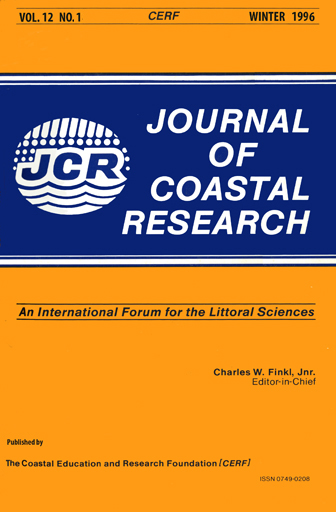Assessing the Impact of Tidal Inlets on Adjacent Barrier Island Shorelines
Keywords:
Shoreline rate-of-change, erosion, navigational entrance, inlet influence, inlet domination, wave-dominated, tide-dominated, tidal prism, impact zone, shoreline stabilization.Abstract
We investigated barrier island-tidal inlet sand sharing systems along the United States' mid-Atlantic coast to determine the impact of tidal inlets on adjacent shorelines. We used two reaches in our analyses with different natural (unstructured) settings: the wave-dominated Outer Banks of North Carolina and the mixed-energy, tide-dominated Virginia barrier islands. Three criteria were used to delineate inlet domination and inlet influence on the adjacent barrier shorelines based on the spatial distribution of shoreline rate-of-change values: (1) the cessation of abrupt changes, i.e., the reduction in variability in the rates of change along-the-shore; (2) a change in the sign DC the rate value from erosion to accretion or vice versa; and (3) a change in the increasing or decreasing trends in rate values. The maximum distances of inlet influence extend to 6.8 km updrift and 5.4 km downdrift of inlets along the Virginia barrier islands and 6.1 km and 13.0 km for the updrift and downdrift inlet shorelines along the Outer Banks barriers. Additionally, shoreline changes can be dominated by inlet processes to a maximum distance of 4.3 km. These results support previous conclusions that sand bypassing processes exert greater influence on mixed-energy short barrier island shorelines than on the wave-dominated, Iong, linear barrier island shorelines.


